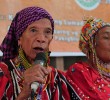Asia Briefing N�64
22 May 2007
OVERVIEW
South East Maluku (Maluku Tenggara, commonly abbreviated Malra), a district in a remote corner of the Indonesian archipelago, is about to be divided in two, and many residents are worried about the possibility of conflict. Attention by provincial and national officials to latent communal tensions, equitable distribution of development funds and even-handed prosecution of corruption, as well as dissemination by neutral parties of information about the division, would help ensure that all remains peaceful.
The separation of the capital, Tual, from the rest of the district is taking place under a mechanism called pemekaran (literally, blossoming) that under Indonesia�s 1999 decentralisation law permitted the division of provinces, districts and subdistricts into smaller units in the interests of better service delivery, more equitable resource distribution and more representative government. A subsequent implementing regulation set in motion a rush around the country to create ever more and smaller units. Despite the Yudhoyono administration�s efforts to declare a moratorium, the carve-up shows no signs of stopping, with the number of districts alone increasing from 292 in 1998 to 483 in early 2007.
In most cases the process has been peaceful, and in a few it has actually produced the desired results. But too often it has been driven by local elites eager to get access to power and wealth, with concomitant problems, among them corrupt feasibility studies to determine the new units� economic viability, funds squandered on construction of palatial government offices, proliferation of new civil service posts with no one qualified to fill them, and a sense of entitlement for native sons and daughters based on increasingly narrow definitions of �native�.
Pemekaran in former conflict areas is particularly problematic, because local power struggles can exacerbate communal and ethnic tensions that outside parties can exploit. West and Central Sulawesi provinces in particular have seen the outbreak of pemekaran-related violence. Maluku (the Moluccas), where communal conflict raged from 1999 to 2002, has a better record thus far. One new province, North Maluku, and eleven districts have been created without incident since 1999. Malra has already been split twice before (see maps, Appendices A and B). In 2000, West Malra district (Maluku Tenggara Barat, MTB) was created. In 2003, the Aru Islands broke away, leaving Malra with the Kei archipelago: Kei Besar (Big Kei), Kei Kecil (Little Kei), Dullah and a number of smaller islands, with Tual the only town of any significance. Both splits took place relatively peacefully. As usual with pemekaran, local elites living far from the capital argued that they would be less marginalised and have better access to services if they had their own districts � and one look at a map shows the logic of their case.
The current case is different. In April 2007, after a hard-fought campaign and liberal amounts of money, a group of politicians in Tual succeeded in persuading the Indonesian parliament that their town should be declared a municipality (kotamadya or kota, equivalent administratively to a district) and in effect secede from Malra. This time it was not the neglected hinterland that wanted out � it was the urban centre with the district�s only airport, tertiary schools, hospital and factory. Malra would be left with almost nothing. In the proposal submitted to Jakarta for approval, the rump district would consist mainly of Kei Besar island and, opponents argued, soon would be bankrupt. Proponents, most of whom live in Tual, argued that it would be a long-overdue boost to development on the island.
In late April, after the last bureaucratic hurdle for the district�s creation seemingly had been cleared but before the authorising legislation was actually passed, the Maluku governor put forward a new option for boundaries that if accepted could satisfy more parties and substantially reduce the risk of communal tension and conflict over land and jobs (see map, Appendix C). In Jakarta, parliamentarians were leaning toward writing the governor�s option into the legislation, due to be passed by the end of May but no final decision has been made. Money, as much as logic, will determine the outcome.
Regardless of which proposal becomes law, the reality of communal tensions needs to be faced squarely. The issues in Tual have nothing to do with religion and everything to do with who gets a share of the political and economic pie. But Malra is on the periphery of an area that saw intense fighting between Christians and Muslims. In March 1999, violence spilled over into Tual, Kei Besar and Kei Kecil. By the time the fighting ended, three months later, some 200 were dead and tens of thousands displaced. One reason it was so quickly resolved was that the area was relatively homogeneous ethnically, and strong customary (adat) mechanisms bridged the religious divide. The conflict�s legacy, however, is a religio-political calculus that hovers in the background of all pemekaran discussions.
No official figures exist for the percentage of followers of different faiths in Malra today, in part because of their sensitivity. One source estimated the district to be about 45 per cent Catholic, 35 per cent Muslim and 20 per cent Protestant but others put the Catholics a little lower, or the Muslim-Protestant percentages closer. Protestants were numerically dominant in 1999 but lost that position when the districts of West Malra and Aru Islands broke away. Depending on how the borders are drawn, Tual�s secession could leave the new municipality with a Muslim majority and the diminished Malra predominantly Christian.
The potential for differences over non-religious issues taking on a communal cast is thus always present, even if at the moment the debate largely reflects a local power struggle and �pro� and �contra� camps on Tual�s secession are religiously mixed. Provincial and national officials need to be aware of the danger, particularly as preparations get underway for local and national elections in 2008 and 2009 respectively, and ensure that tensions � whether over boundaries, resources, choice of district capital or civil service appointments � are quickly resolved.
This briefing looks at the background to the division of Malra and the political interests of those involved on both sides. It is based on in-depth interviews with many of the chief players in Tual, Kei Besar, Ambon and Jakarta. Unfortunately, M.M. Tamher, the leader of the pro-pemekaran camp, was not available for comment despite many efforts to reach him in Malra and Jakarta.
Jakarta/Brussels, 22 May 2007










